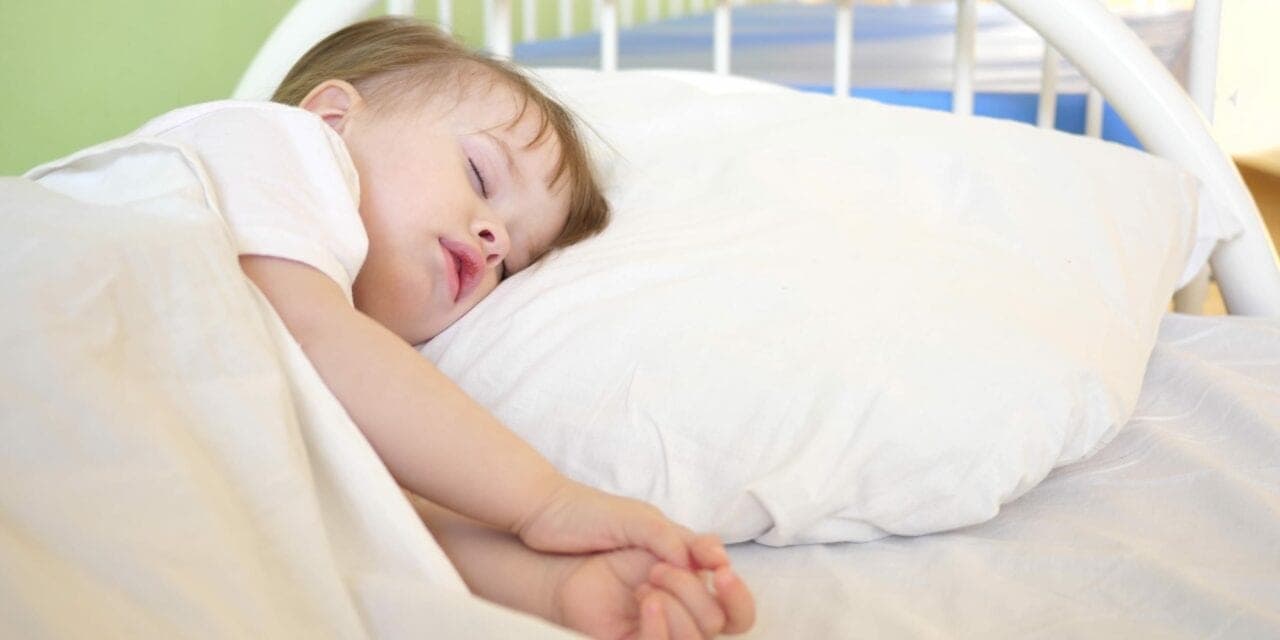New technological developments are increasing comfort for the smallest patients.
By Lisa Spear
It’s no secret that children are physiologically different than adults. Their small bodies leave less real estate for the placement of sensors during in-lab sleep studies. Not to mention, children don’t often have the temperament to put up with the discomfort of an overnight stay in an unfamiliar place, let alone the tolerance for being hooked up to a tangle of wires.
“There are only so many sensors that you can put on a little head,” says Ignacio Tapia, MD, a pulmonologist in the Division of Pulmonary and Sleep Medicine at Children’s Hospital of Philadelphia.
And an ill-fitting pulse oximeter or a nasal cannula that falls out during the night could lead to wasted time, faulty data, and difficulty in making an accurate diagnosis. Luckily, the ongoing development of new technology is tackling these issues, including more variation in sizes, more flexible and comfortable materials, and wireless sensors.
Since children move around in their sleep much more than grown-ups, the SOMNOscreen HD polysomnogram (PSG) system comes with a software option that incorporates back-up signals in case a signal gets lost during the night. For example, if the nasal cannula slips out of place, the software can switch from the flow channel to the RIP signals.
“Thanks to that option, the measurement isn’t lost and the evaluation staff still can analyze the measurement,” says Stefanie Becker, a marketing representative from SOMNOmedics, a Germany-based medical device company.
[RELATED: In-Lab Polysomnography (PSG) Comparison Guide]
Decreasing the stress of a sleep lab visit is also important for children. Over the last few years, several PSG systems have incorporated wireless sensors to give patients more freedom of movement.
In 2020, Nox Medical released an ambulatory A1 PSG system in the United States. The pulse oximeter is wireless and transmits data via Bluetooth. Results of a recent study demonstrated that when the equipment is installed at a sleep professional’s office and a parent monitors the child, the Nox A1 is an acceptable way to test children aged 3 through 16 for obstructive sleep apnea.1
The SOMNOscreen HD device also incorporates wireless sensors.
Wireless sensors give patients the flexibility to just get up and go to the bathroom during a measurement and not to be bound to the bed. Very small children can have a more comfortable measurement when the main device is not attached to them directly but is placed beside them, and they have only the sensors attached to them, says Becker.
“We try to make the sensors as small and easy to wear as possible. If we can get rid of a cable, we do. This means having more sensors built in the main device and providing wireless solutions where ever possible,” says Becker.
In addition to wireless technology, some medical manufacturers have developed sensors that are less obtrusive, with smaller profiles. Several pulse oximeters from Nonin are designed to clip or wrap around a baby’s foot instead of the finger, so the sensor is out of the way.
Another example of downsizing the impact of sensors is the three-in-one Child ThermoCan System by SleepSense, which minimizes the number of tubes and wires that have to be attached to the child’s face. It monitors thermal airflow, pressure airflow, and capnography with one cannula and works with most PSG systems.
“Children don’t tolerate things that aren’t comfortable and really easy to wear,” explains Sarah Paddock, director of sales & marketing at SLP, maker of the SleepSense brand. “Children have small facial features and they really just don’t tolerate a lot in or around their face.
“In the old days, you would have a reusable thermistor that you would tape onto a cannula. So you would have two things in and around the child’s airways. And then, if you wanted to monitor capnography, you would tack on another cannula….What we did basically is we took a capnography and pressure all-in-one cannula and we designed it with a built-in, disposable thermal airflow sensor. What it means for the patient is that instead of having two or three things up their nose and over their mouth, they have just one.
“The best part is, the portion that is in contact with the child’s nose and mouth is completely disposable. This is great for infection control and is easier for small patients to tolerate as it is one sensor over their airways and not multiple.”
Another way to help kids feel more at ease during sleep studies is by using nasal pressure with sensors that sit outside of the nostrils as opposed to typical nasal cannulas. The Dymedix TriplePlay pediatric and infant sensors capture the same data as most nasal cannulas but rest just under the nose.
“There appears to be unanimous agreement among pediatric sleep testing clinicians that the nasal cannula is a sensor that provides the most significant problems when performing infant and pediatric sleep studies,” says Todd Eiken, RPSGT, FAAST, vice president of product development at Dymedix Diagnostics, a company that designs sleep sensors. “Pediatric patients have difficulties tolerating this sensor and subsequently are often unable to achieve sleep when the cannula is in place.” Dymedix TriplePlay provides a solution.
Also, Dymedix Diagnostics offers a family of sensors called Lullaby designed specifically for pediatric patients, including infants.
The Lullaby family includes disposable and reusable airflow sensors, respiratory effort belts, movement sensors, and surface electromyography electrodes. All are sized for the pediatric population to attain more accurate data and increase comfort.
Properly training sleep lab staff members to work with children can also make all the difference in the success of an in-lab study, Tapia says. For instance, if a child is nervous about putting on a nasal cannula, a parent could try it on first.
If a pulse oximeter is slipping off of a child’s finger, his team members might use colorful mermaid tape to secure the device. By making the process fun and incorporating familiar toys, the child is more likely to feel at ease. Even just asking the parent or caretaker to bring the child’s favorite doll or teddy bear to the sleep study can provide a significant degree of comfort and calm, says Tapia.
“We ask the families to bring anything that is comforting for the child—maybe they have a favorite blanket or pillow— they can bring it to the lab, no problem,” says Tapia. “It makes the situation more palatable for them.”
Lisa Spear is associate editor of Sleep Review.
Reference:
1. Ioan L, Weick D, Schweitzer C, et al. Feasibility of parent-attended ambulatory polysomnography in children with suspected obstructive sleep apnea. J Clin Sleep Med. 2020 Jul 15;16(7):1013-9.




